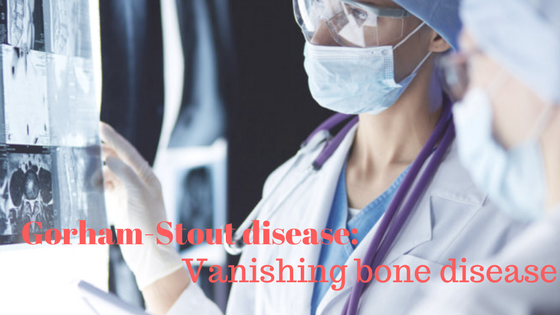Rare Bone Disease

Vanishing bone disease
Rare bone disease called Gorham-Stout disease, In which
patients experience abnormal development of blood vessels and lymphatic vessels
that overwhelm and penetrate bone tissue, gigantic osteolysis, and more than a
half-dozen other terms in the medical literature, is a uncommon bone disorder
characterized by osteolysis and the proliferation of lymphatic vessels, Causing
it to break down, also known as "vanishing bone disease," and it's an
extremely rare condition. Gorham disease is thought to be non-hereditary and
there is no perceived gender preference. It can possibly happen in any age
group although most reported cases have been in youthful adults.
When GSD affects the maxillofacial area, pain, loose teeth,
fractures and facial distortion may develop. The exact cause of GSD is obscure.
No environmental, immunological or hereditary risk factors have been
distinguished. Most cases happen randomly for no known reason. Vanishing bone
disease, in spite of the fact that is considered as generous and its natural
movement is characterized by spontaneous resolution has an unpredictable
prognosis and possible serious complications. In patients with huge symptomatic
injuries with long-standing disabling functional instability, radiation and
surgical treatment are preferred. The therapeutic comes about from the use of
radiation in moderate doses appear to be satisfactory, with few long-term
complications.
Gorham disease is
thought to be non-hereditary and there is no recognised gender predilection.
The disorders begins in one bone but may spread to include adjoining bony and
soft tissue structures. Imaging techniques including plain x-rays, ultrasound,
radioisotope bone scans, computerized tomography (CT) scanning, and magnetic
resonance imaging (MRI) may be utilized to help in getting a diagnosis. There
is no consensus in the therapeutic literature as to what is the most successful
treatment for GSD. Surgery to remove the affect areas of bone has been
performed to treat people with GSD. Radiation treatment, in some cases in
conjunction with surgery, has also been utilized to treat people with GSD.
Radiation treatment has proven effective in treating some affected people,
accomplishing pain relief and arresting the spread of osteolysis.



Comments
Post a Comment